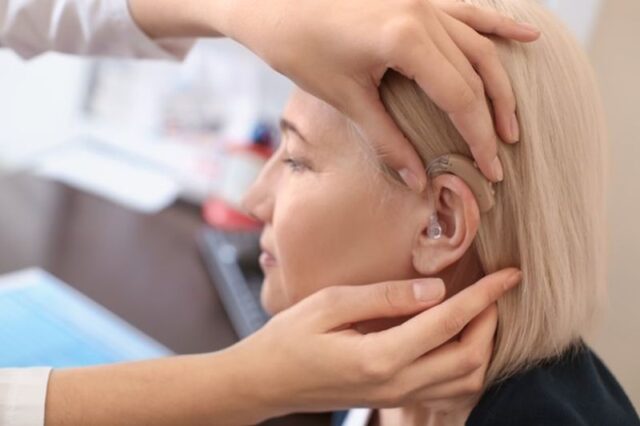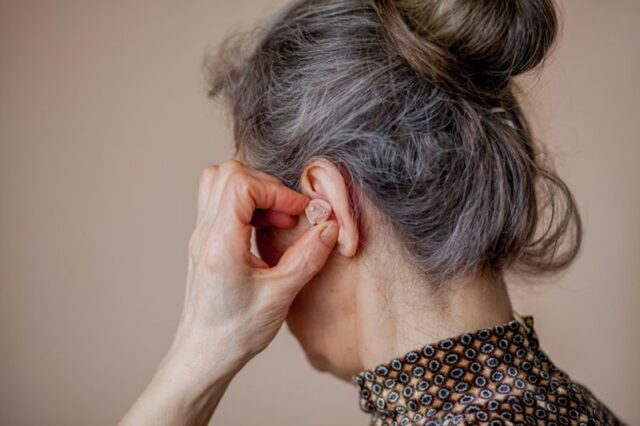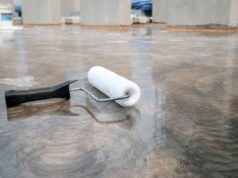
The term hidden hearing loss refers to people who have difficulty hearing in certain environments or have only a mild but gradual hearing loss that is undetectable with traditional hearing testing equipment. For people who suspects they have some degree of hearing loss, visiting an audiologist for a hearing exam is the first step in receiving a proper diagnosis and treatment.
However, the audiogram report from hearing testing sometimes comes back normal, despite significant challenges with hearing conversation, especially in crowded environments. Hidden hearing loss can be especially frustrating because audiologists are not sure what help to offer patients when they cannot detect the problem.
What Causes Hidden Hearing Loss?

The inner ear contains hair cells and nerves that receive sound and send signals to the brain. Hidden hearing loss disrupts the transmission of signals, causing people not to hear certain sounds or speech at all or to interpret them incorrectly.
Unfortunately, the audiology industry traditionally has not used the necessary hearing testing technology to pick up this type of hearing loss. According to the American Association of Retired Persons (AARP), a typical patient can lose up to 90 percent of electrical connections between the brain and inner ear before the hearing loss shows up on an audiogram.
Thankfully, there is growing awareness of this phenomenon. Some of the tools audiologists currently use to help detect the nerve cell damage that causes hidden hearing loss include:
- Auditory brainstem response test
- Otoscopy
- Pure tone test of speech and speech reception threshold using octave band frequencies
- Speech reception threshold
- Tympanometry
- Words-in-noise test (WIN)
- Word recognition in quiet test
Another challenge with detecting hidden hearing loss is that changes take place slowly and impact the brain more than the inner ear. Brain changes associated with hearing do not always appear on standard neurological tests either. Researchers at the Massachusetts Eye and Ear Center are currently conducting research to help audiologists and neurologists find a biomarker that signifies the presence of hidden hearing loss.
Ongoing exposure to loud noise is the leading cause of hidden hearing loss in adults of all ages. The condition is especially common in younger adults who may not always think to protect their hearing when attending loud events such as concerts. Exposure to everyday loud noises like traffic congestions can also wear down the hair cells in the ear over time.
What Are the Symptoms of Hidden Hearing Loss?

People can go with undetected hidden hearing loss for several years before they realize the problem. The first indication of a potential hearing issue for many people is that they have difficulty following conversation in noisy environments such as a restaurant. A recent post by Nuheara.com describes why restaurants specifically represent such a challenge for individuals with hidden hearing loss:
“Between the playing of overhead music, the whirring of kitchen equipment, the conversation of other guests, and the seating and departure of other guests, visiting a popular restaurant can be as loud as sitting near a diesel truck. At this level, even those with normal hearing can’t make out what others are trying to say.”
Some application developers have responded to this situation by creating smartphone apps that allow people to look up the average decibel at a restaurant before deciding to dine there. Ringing or buzzing in the ears known as “tinnitus” is another common symptom of hidden hearing loss.
Coping and Treatment Strategies

Science has not yet discovered a cure for hidden hearing loss but that may happen eventually. In the meantime, people with this condition should avoid loud environments whenever possible and protect their hearing in any situation with above average noise levels.
Wearing musician’s earplugs or noise-cancelling headphones can help keep sound levels more comfortable when avoiding a certain environment is not possible. People who listen to music through earbuds or headphones should turn the volume up only as high as necessary to hear at a comfortable setting.
Sitting with distracting background noise behind you when eating at a restaurant can be helpful for those with this condition. Having other people sit directly in front of you also ensures the ability to see the mouths and faces of their dinner companions to make it easier to keep up with conversation.
A visit to an audiologist is always in order, even if current testing equipment cannot identify the problem. Testing will at least confirm or rule out other hearing disorders such as mild to moderate sensorineural hearing loss. People with that type of hearing loss usually benefit from wearing traditional hearing aids.
Alternative Amplification Options for People with Hidden Hearing Loss

Hearing aids have helped millions of people around the world amplify sounds and participate in social activities again, but they are not right for everyone. Many people cannot afford them due to the high out-of-pocket cost after receiving little or no insurance coverage. Those with hidden hearing loss do not benefit from traditional hearing aids because they do not transmit signals to the correct area of the brain for processing. However, there are a few companies like Blue Angels Hearing that offer its product up for sale online, directly to consumers making their products affordable compared to other brands. They offer high-quality hearing aids for an affordable price.
Hearables are a new type of wireless technology that provide people with sound amplification based on their individualized hearing profile. The average cost is around $400 compared to the upper $5,000 to $6,000 range of a pair of technologically advanced hearing aids.
There is a lot of excitement about the potential of so-called hearables as well as the future of “over-the-counter” hearing aids. These products will potentially work well for people with hidden hearing loss because they control intensity of incoming sound based on their current environment.
For example, with some of these devices already on the market, users can adjust their earbuds at work to have better clarity with speech sounds and use the “world off” feature while driving to minimize all incoming noise. Other companies offer built-in hearing tests that accompany their earbuds, enabling the devices to adapt to the user’s personal hearing profile.
Hearables represent an excellent alternative for people who would receive little benefit from hearing aids or are just not ready to commit to wearing them. Individuals with hidden hearing loss are a potential beneficiary of this technology.









